The older Bowers & Wilkins 800 Series loudspeakers are capable of reproducing solid bass, but even they need low-frequency support. The Bowers & Wilkins DB1 subwoofer is the best candidate for this role and simply the best subwoofer in the company's lineup.
In order to add something meaningful to the sound of the low-frequency range of Bowers & Wilkins 800 series floor-standing speakers, you need a subwoofer that has truly tremendous power, because you will have to work with infra-low frequencies, the reproduction of which requires a large cone size and a large speaker journey, as well as high energy consumption. Building such a powerful bass machine is not easy, especially since Bowers & Wilkins has extremely high demands on the quality of its products.
The DB1 subwoofer - the result of painstaking work by Bowers & Wilkins engineers - is equipped with a 1 kW Class D amplifier and two 300 mm drivers. It is these technical means that allow him to achieve the required sound pressure levels. The acoustic design is closed, providing a smooth roll-off of low frequencies and, as a result, the ability of the subwoofer to confidently reproduce the deepest bass. The opposite arrangement of the radiators solves the problem of unwanted vibrations and resonances in the housing. All parasitic vibrations are transmitted to the cabinet from two radiators with the same effort and in antiphase, due to which they fully compensate each other, and the subwoofer itself remains motionless even when operating at extreme volumes.
The speaker cones are made of durable and lightweight Rohacell polymer material, widely used in industry and aircraft construction. The rubber suspension provides a large diffuser journey without violating the piston mode, and given the fact that two speakers are used, the free travel reserve of each radiator separately turns out to be quite significant.
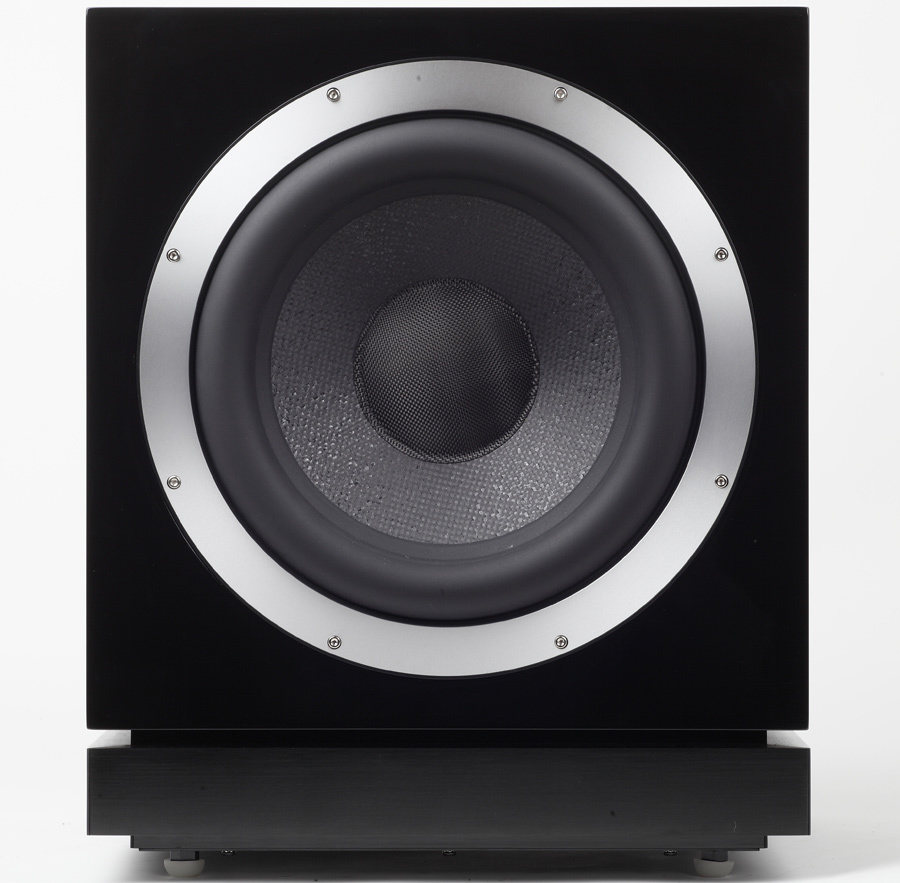 |
As befits a High-End subwoofer, the Bowers & Wilkins DB1 showcases a variety of expensive finishes, natural cherry or rosewood veneers, and black lacquer. Anyone who has seen photos of various finishes in an advertising brochure or on the manufacturer's official website must have noticed that the lower part of the subwoofer, on which the display, control buttons, and connectors are located, looks the same in any finish. Indeed, this part, on which the amplifier is also fixed from the inside, is standard, which allowed the developers to realize a very unusual opportunity. If the subwoofer is installed in a confined space, for example, when it is built into furniture, it will inevitably arise the problem of choosing the correct orientation of the radiators.
The speakers are initially located on the sidewalls of the subwoofer, and if you put them in a narrow niche, they will radiate directly into the walls. Rotating the subwoofer 90 ° (so that the speakers play in an open space, forward and backward), another problem arises - limited access to connectors and controls. This problem is solved by the ability to rotate the base of the subwoofer relative to its main part. It is enough to loosen the four fixing screws on the bottom of the case, and the base can be rotated 90o. After this procedure, the speakers hit the front and rear walls, and the Bowers & Wilkins DB1 can easily be installed in the narrowest niche.
 |
| The rear platform is used only for commutation, and all adjustments and settings are made using the menu of the subwoofer or a computer connected to the RS232 port. |
The subwoofer commutation set makes it possible to use only low-level inputs - balanced and unbalanced mono and unbalanced stereo. Conveniently, you can connect two sources at the same time: monaural and stereo, and then switch using the subwoofer control menu.
Bowers & Wilkins DB1 has several external control interfaces: RS232, IR input, and two 12V triggers (one trigger is used to turn on, and the other to switch operating modes). The USB port on the rear panel does not participate in control and is intended only for updating the device firmware.
The easiest way to set up is to directly control the subwoofer using the buttons and display located on the front panel. The top level of the menu is a selection of preset modes, each of which can be changed. The available set of settings go well beyond the standard volume/phase/cutoff frequency. In addition to them, there is the possibility of choosing the slope of the crossover cutoff of 12 or 24 dB, and additional correction of the resulting frequency response can be made using a 5-band equalizer operating in the range of 20–80 Hz. Five buttons are used to operate from the body of the device, which, however, did not make navigation in the menu particularly easy or intuitive. At the first acquaintance, you will have to get used to the not quite usual interface algorithm. However, the end-user should not particularly worry about this problem,
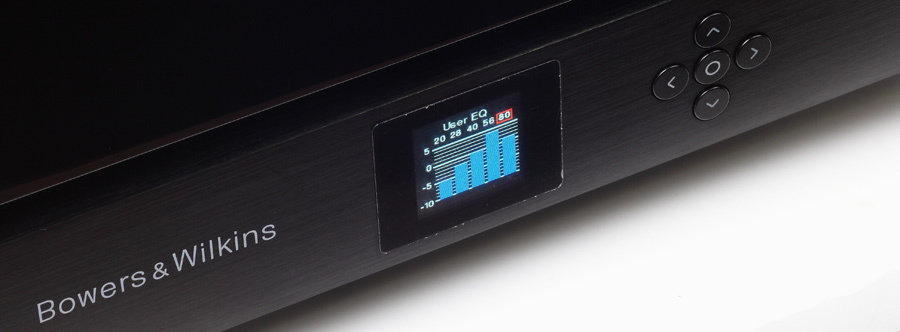 |
| On the front panel, there are buttons and a small display, with the help of which control and configuration are carried out. |
Another, more technically difficult, but more effective and more convenient way of tuning is to calibrate the subwoofer using a computer. To do this, the delivery set includes a special microphone, a USB-RS232 cable, and an external sound card made in the form of a small USB module. In addition to the settings that could be seen and made in the menu of the subwoofer itself, the proprietary software also makes it possible to automatically correct the acoustic properties of the room based on the results of measurements made with a microphone.
Speaking about the operation of a subwoofer of this class and with such a wide frequency range (the lower limit at the level of –6 dB is 15 Hz), it must be said about both sound and physical sensations, since you literally feel a good half of what the Bowers & Wilkins DB1 reproduces. body. In the audible range, the bass is extremely clear, powerful, sounding confidently up to the upper bass.
Surprisingly easily, the subwoofer docked both with small shelf acoustics, which is practically unable to reproduce the bass range on their own, and with large floor speakers, which only needed infrastructure. In the second case, when, it would seem, there is enough bass, the sound acquired greater fullness and solidity, and specifically, the bass range became more saturated and natural. In-home theater mode, low-frequency effects take on exceptional realism. The engines of an airplane taking off not only sound convincing but also produce very convincing, physically perceptible vibrations.
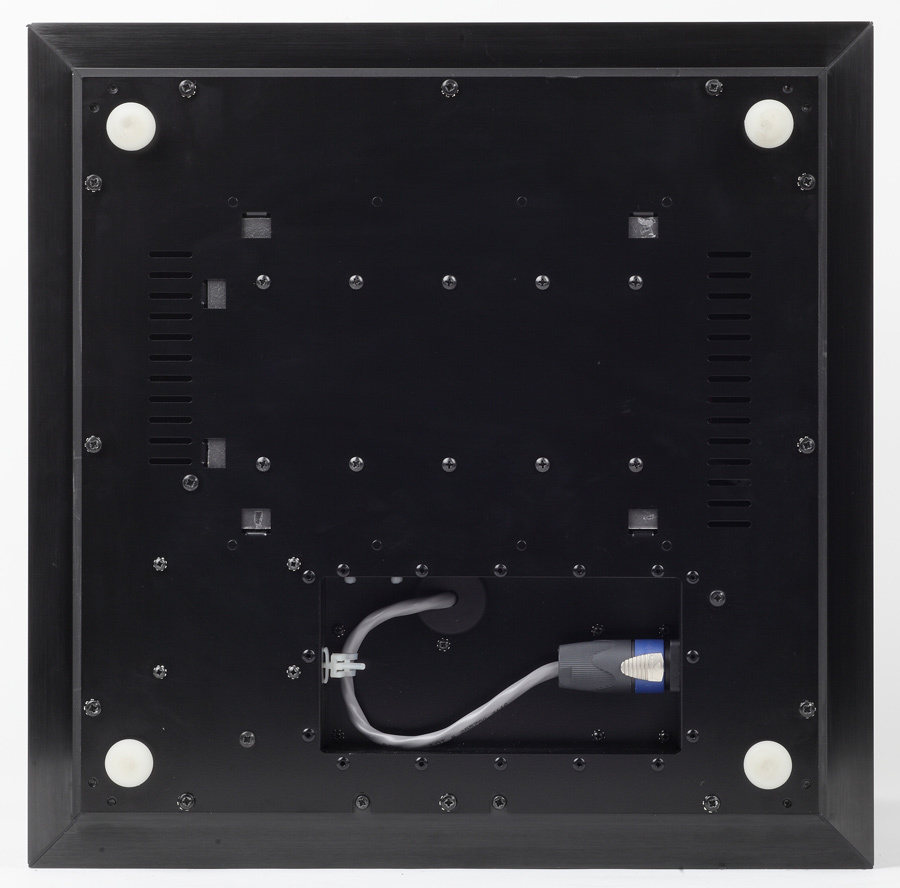 |
| The base of the subwoofer and the dual-driver enclosure on top of it are connected to each other using a Speakon connector. This allows the top to be turned in the desired direction. |
Bowers & Wilkins DB1 is really impressive, and if you suddenly have doubts about the need and usefulness of this device, just press the shutdown button - the perception of music and especially cinema changes very noticeably.
Measurement Results and Specifications for Bowers & Wilkins DB1 Subwoofer
When the crossover is fully open, the centerline of the frequency response of the subwoofer tends to a horizontal straight line without visible hints of roll-off at the edges of the range. Distortion is low to moderate, starting at 30 Hz.
Stereo & Video
Data Measured in the Stereo & Video laboratory. April 2013.
- Medium THD: 40-100 Hz, 82/88/94 dB: 0.30 / 0.36 / 0.59%
- Standard deviation: 2.98 ohms
- Average value: 6.9 ohms
- Maximum value: 19.56 ohms
- Minimum value: 4.22 ohms
Bowers & Wilkins DB1 Specs
- Frequency Response: 17-145 Hz (+/– 3dB)
- Woofers: 2x300 mm
- Speaker placement: opposed
- Acoustic design: closed
- Power: 1000W
- Crossover controls: digital: frequency, slope, phase, equalizer
- Inputs: low-level stereo and mono (RCA), low-level mono (XLR)
- Additional interfaces: RS232, 2x 12V trigger, IR receiver, USB
- Dimensions: 460x490x410 mm
- Weight: 44 kg
- Finishes: black lacquer, cherry, rosewood


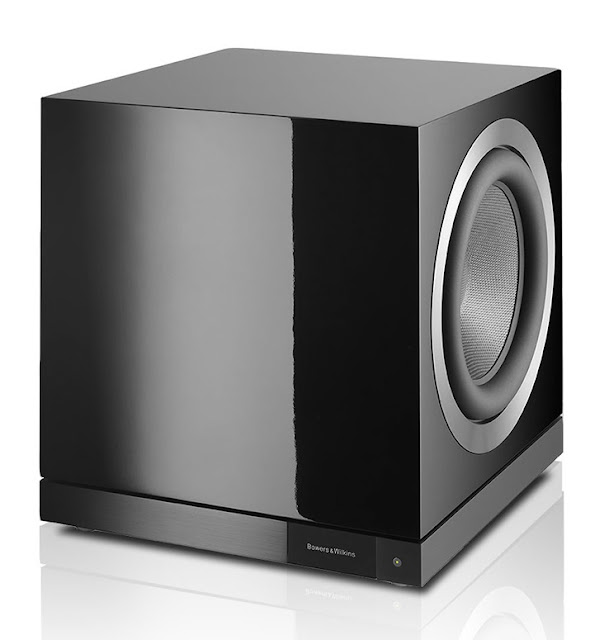
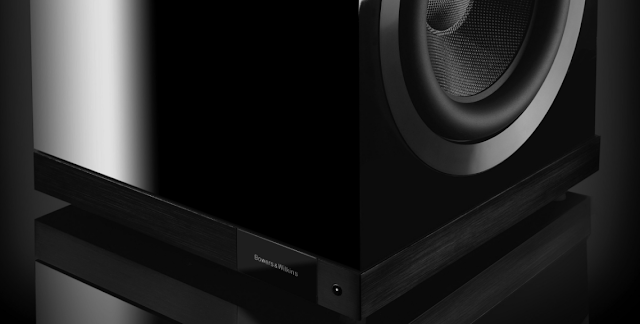









.jpg)


.jpg)



0 Comments